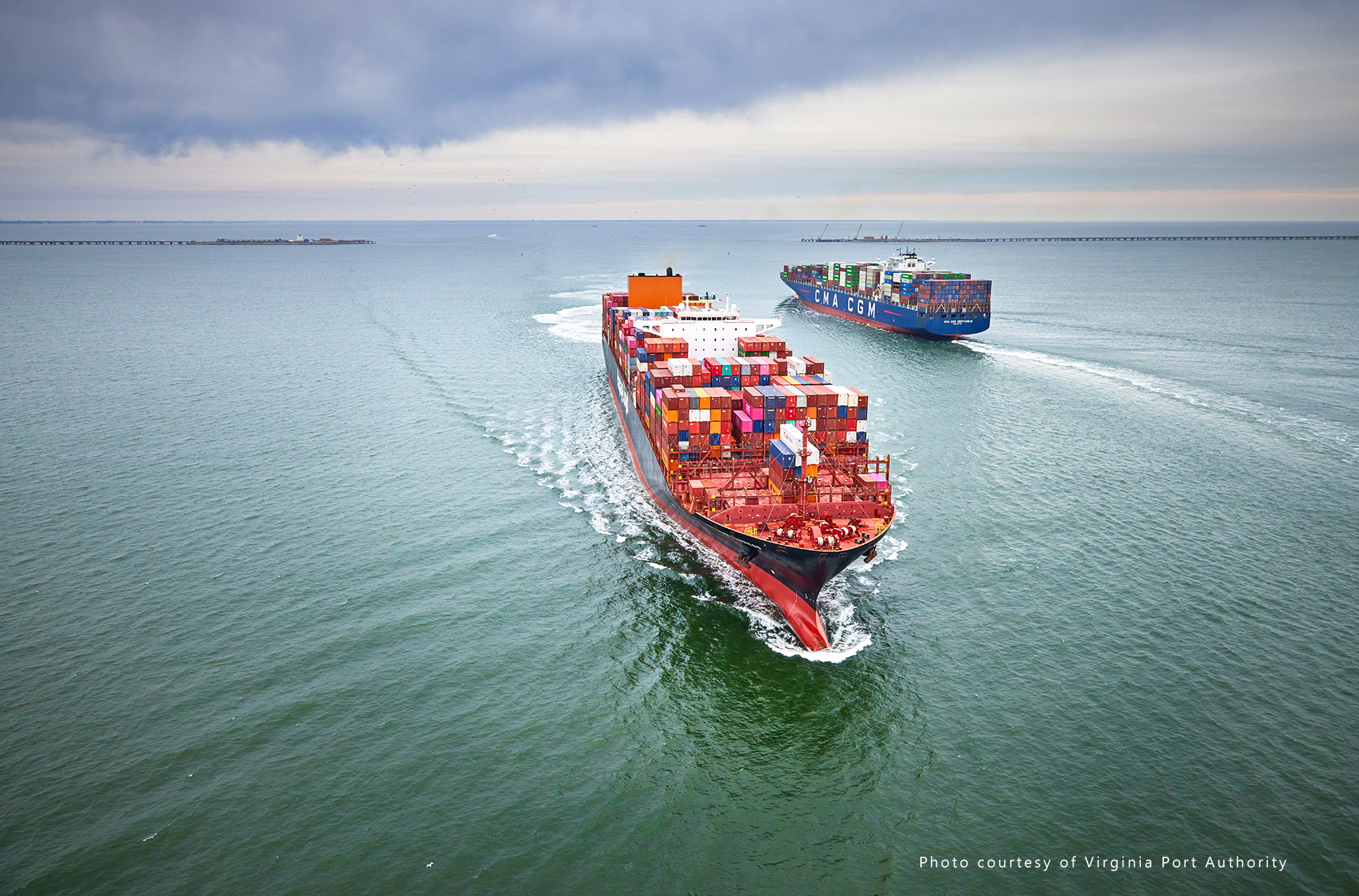Coast Guard Removes One-way Ship Restrictions
 On Friday, March 1, the U.S. Coast Guard Captain of the Port released Business Rules for Ultra Large Container Vessels - Change 2, which removed one-way channel restrictions for Ultra Large Container Vessel (ULCV) transits in and out of Hampton Roads. The significance of this action is the effective addition of capacity and improvements in efficiency of commercial and naval operations throughout Virginia’s ports.
On Friday, March 1, the U.S. Coast Guard Captain of the Port released Business Rules for Ultra Large Container Vessels - Change 2, which removed one-way channel restrictions for Ultra Large Container Vessel (ULCV) transits in and out of Hampton Roads. The significance of this action is the effective addition of capacity and improvements in efficiency of commercial and naval operations throughout Virginia’s ports.
"The importance of the return of 24/7 two-way navigation cannot be overstated,” says David White, Executive Director of Virginia Maritime Association. “Ships need to be on the move and terminals need efficiency from their facilities and operations. Time is money, and this improves the competitive position of our port and commonwealth. Projects like this are many years in the making, and it began as a priority of the Hampton Roads Navigational Summit. Along the way, many have supported the efforts and worked to reach this milestone in the journey to Wider, Deeper, Safer©. We are grateful to them all."
The dimensions of the ULCVs which began calling our port in 2017 introduced new navigational risks and made it necessary to establish the first-in-the-nation ULCV Business Rules, a document developed through the collaborative efforts of multiple port partners that set the practices to be followed to coordinate ship movements. A central component of the Business Rules prohibited ships from sailing past a ULCV transiting Thimble Shoal Channel due to the limits of the channel’s widths. Ships were allowed to sail only in the same direction of the ULCV, creating periods on average of 3 hours of one-way traffic when ships needing to sail in the opposite direction were required to wait.
Since 2017, the number of ULCV’s has become an increasing percentage of ships. In 2023, there were 2,547 commercial ships that called on the container, coal, and other dry bulk, liquid bulk, breakbulk, and passenger terminals in Virginia’s ports. The number of container ships was 1,647, with 176 being ULCVs. Since restrictions were required for each arrival and departure, 352 periods totaling over 1,000 hours of one-way traffic would have been incurred in 2023.
The Coast Guard’s change to the Business Rules removing one-way restrictions was made possible because the U.S. Army Corps of Engineers and the Virginia Port Authority reported completion of the widening effort of Thimble Shoal Channel from 1,000 ft. to 1,400 ft. As a result of the channel’s expanded dimensions, vessel meeting situations can be conducted safely within Thimble Shoal Channel without continuing to require one-way restricted traffic patterns for ULCVs.
The restoration of 24/7 two-way traffic, with some safety and security exceptions, adds vessel movement capacity, provides flexibility for ship movements, and allows cargo terminals to better optimize their berths and cargo operations. The Virginia Port Authority stated this change may reduce the amount of time vessels spend on berth at one of their facilities by up to 15 percent.
Work continues to dredge the Norfolk Harbor to 55 feet deep and the ocean approach to 59 feet deep so commercial ships of all types can maximize their cargo-carrying capabilities by sailing to and from Virginia terminals fully laden of imports and exports transported with greater economic efficiency.
With gratitude to all who have played a part, and pride in VMA’s contributions, the VMA celebrates the restoration of 24/7 two-way ship traffic and this milestone in making Virginia the Widest, Deepest, Safest© port on the U.S. East Coast.